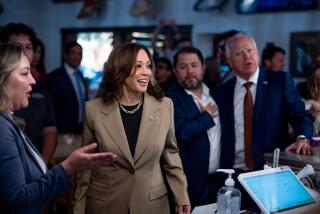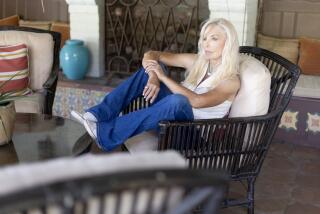The Informal Pleasure of Clinton-Style Entertaining
- Share via
The President and Hillary Clinton’s style of entertaining--cozy dinners with friends--has social sets all over the country wondering whether they should mothball their formal wear.
“There’s been a decrease in formal entertaining,” notes manners expert and author Letitia Baldrige, once Jacqueline Kennedy’s chief of staff.
“The Clintons have a lot of friends and a lot of personal dinners. It’s all ‘Come on over’ informal. Some of it very last-minute.”
But don’t stash those tuxes and tiaras yet. “I think the formality will come,” says Baldrige, who lives in Washington. “There are a lot of people who haven’t yet been invited to the White House, people who would enjoy a black-tie affair. The social mood here is wait-and-see.”
Glittering state dinners were the social centerpiece of the Bush and Reagan administrations. The Clintons have yet to stage one. “That’s the greatest change of all,” Baldrige observes. “Past administrations would have had four or five state dinners by June 1. I think it’s just that the Clintons have had so much thrown at them.”
Meanwhile, Clinton pals such as Laguna Beach’s Janice and Roger Johnson (he’s head of the General Services Administration) will continue to socialize informally with the First Couple.
“They really love having friends around,” says Janice, who dined with the Clintons in their upstairs quarters. “They’re very sincere people. They seemed delighted to have us there to talk. You didn’t have the feeling this was something they had to do.”
Says Baldrige: “Entertaining has an enormous sociological good that comes from it. We need to sit around the symbolic circle or rectangle after working hard and fighting the problems of urbanization--crime, job stress, divorce. We desperately need to share jokes and laughter--get consoled, help each other out.”
During her dinner with the Clintons, Janice asked the First Lady how she could work so hard all day and entertain so energetically at night. “She told me that if she didn’t have the dinner parties, she wouldn’t get to see her friends,” Janice says.
In the ‘80s, the social emphasis was on flash, being seen. People dressed to the nines kicked up their heels until the wee hours. “Parties for parties’ sake,” says Janice, a former Republican. “The government spent beyond its means, and a lot of people did too. Now the emphasis is on sensibility. There is a concerned and worried mood because the end of the rainbow has come and gone.”
People are fretting about taxes. About having enough money to continue their charity giving. About having enough money to participate in the social scene in a meaningful way.
“I’m sad about the uncertainty of the social climate,” says Wendy Weber of Huntington Beach, former deputy press secretary to Nancy Reagan. “People are worried about their financial futures, so there is a reluctance to make those kinds of social commitments that have been easy for them to make in the past. And I don’t think it’s going to get better soon.”
In the ‘80s, the mood was hopeful, Weber recalls. “Things were happening. People were prosperous, making money, moving forward.
“Now, we don’t feel like we can help as many people with our charity dollars. And we don’t like having to say, ‘No. I’m sorry. Not this year.’ ”
Even fashion is reflecting our woeful economic times, Weber notes. “Take the waif look. You just don’t show your sequins and diamonds these days. There are too many people out of work. It’s not fashionable to flaunt your success when there are so many people struggling with theirs.”
Wearing last year’s gown is almost de rigueur , Johnson says. “Nobody is buying a $2,000 gown, wearing it once, and then giving it away anymore. They’re wearing something they wore before or buying something with a reasonable price tag.”
Not only are social leaders entertaining informally and dressing more casually, they’re also eating brown bread and pumpernickel at parties, notes Baldrige. “That was never done. It was always white bread and white rolls. But people are eating more carefully, with an eye on good health.”
And on their pocketbooks.


